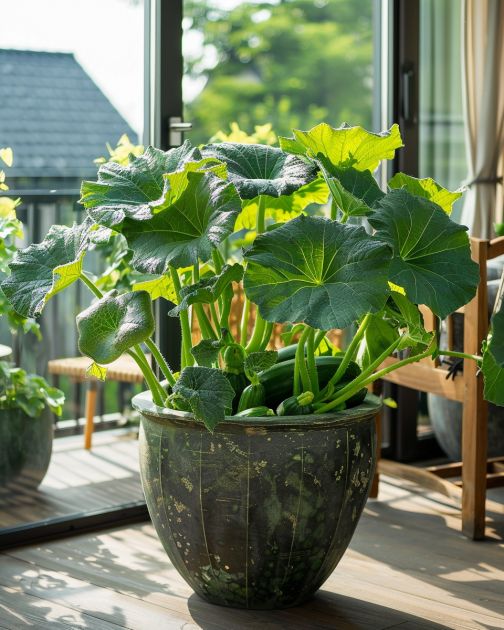Step 5: Position Your Container
ADVERTISEMENT

ADVERTISEMENT
Foster the biggest zucchini plant in a container with this step-by-step guide
1. Place the container in an area that receives at least 6-8 hours of sunlight daily.
2. Rotate the container occasionally to ensure even sunlight exposure on all sides.
Step 6: Water Regularly
1. Zucchini plants in containers need consistent moisture; water when the top inch of the soil feels dry.
2. Avoid wetting the leaves to deter fungal diseases.
3. Consider a drip irrigation system for consistent and efficient watering.
Step 7: Monitor and Manage Pests
1. Regularly inspect your plant for common pests such as squash bugs, aphids, and spider mites.
2. Remove pests by hand or use organic insecticidal soaps when necessary.
3. Employ companion planting with herbs like marigolds or nasturtiums to naturally repel pests.
Step 8: Provide Support
1. Although not a climbing plant, large zucchini plants may benefit from support like tomato cages to maintain airflow and plant structure.
2. This will also help to keep the fruits off the soil, reducing the chance of disease.
Step 9: Fertilize During the Growing Season
1. Apply a liquid fertilizer rich in phosphorus and potassium every 4-6 weeks to promote strong growth and fruiting.
2. Be cautious not to over-fertilize, as this can lead to lush foliage at the expense of fruit production.
Step 10: Harvest Your Zucchinis
1. Harvest zucchinis when they are young and tender, about 6-8 inches long.
2. Use a sharp knife or pruning shears to cut the fruit from the plant, being careful not to damage the stem.
3. Regular harvesting encourages the plant to produce more fruit.
By following these steps, you can anticipate a healthy, vigorous zucchini plant growing in your container. With attention to detail and regular care, your zucchini can grow to be quite substantial, providing a satisfying yield from a small space.
ADVERTISEMENT
ADVERTISEMENT
